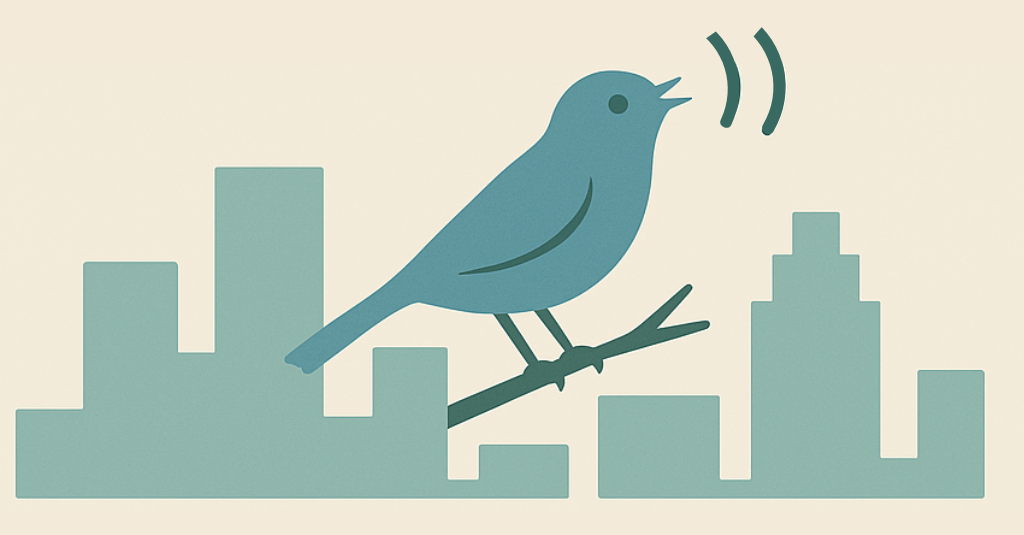What if someone approaches me and asks what I'm doing?
- If a passerby asks what you are doing, be friendly and explain that you’re helping with a bird research project by recording a few minutes of birdsong. Feel free to print out the flyer (
Durham version
,
Chicago version
) and show it to folks!
- If anyone asks you to leave or seems uncomfortable, do not argue. Thank them, leave the area, and let us know what happened. We will adjust your location if needed. We don’t anticipate this happening but it’s good to be aware of your surroundings!
Can I move during the recording?
- You can pace a little bit but try to move quietly to avoid adding noise to the recording, and don't stray far from your sampling location.
Do I need to be an expert in identifying birds?
- Not at all! We rely on software to automatically identify birds from the audio clips, so you don't need to know how to identify birds or their calls.
How should I hold my phone?
- Hold your phone upside down so the microphone is facing up (where the birds are!). Make sure you don't cover the microphone with your fingers.
Do I have to stand on the exact spot indicated by the GPS coordinates?
- No, but try to be within about 50 yards of it. The sites are all in publicly accessible areas (sidewalks, greenways, etc.).
Where do I park? What does the site look like?
- Check out this link for street-level photos of the site and, where needed, parking instructions.
These detailed site descriptions are currently only available for Durham; the site descriptions for Chicago are coming soon!
When do I make the recordings?
- Recordings must be made within three hours of sunrise. Check out the "Time and Date" website for sunrise times in your city (Durham link, Chicago link).
- As a rule of thumb, if you make your recording before 8:58AM in Durham, or before 8:14AM in Chicago, you'll be within the desired time window.
What happens next?
- Once we gather all the audio from our participating cities this spring, we'll build statistical models to understand what social and ecological factors (tree cover, historic redlining, etc.) are associated with urban bird biodiversity. We'll update you on our findings over the coming months!
- 2025 is our pilot year for testing out this protocol, and we plan to run the project again in more cities, and more sampling sites, in 2026. Stay tuned!
What if I'm having trouble emailing the recording?
- If you have trouble sending your Merlin recording by email (e.g., if it gets stuck), check your Mail app's Outbox and see if the email winded up there. If so, simply tap the email again to send it manually. This happens sometimes if the connection is slow right at the moment of sending. If you are still having trouble emailing the recording, feel free to reach out to us directly (email address below). There are a number of other options for getting the recording out of the Merlin app that we can explore. Thanks for your patience!
Other questions?
Contact: Bradley.Allf@colostate.edu
We are grateful for your time and enthusiasm. Your efforts will shape our understanding of urban bird life and inspire research in cities across the U.S.
Bradley Allf, PhD
Postdoctoral Scholar, Bombaci Lab
Department of Fish, Wildlife, and Conservation Biology
Colorado State University

